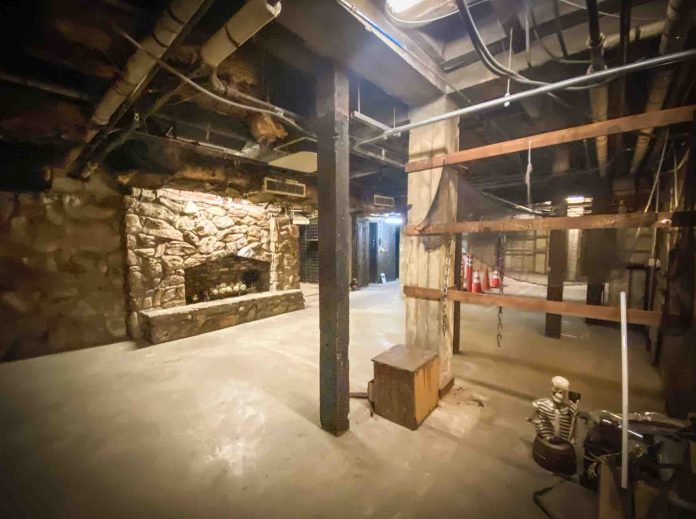Want to read previous Long Beach Lost articles? Click here for the full archive.
The Lafayette complex—whose tower just saw a beautiful repainting and restoration of its terra cotta last month—is one with a storied history here in Long Beach.
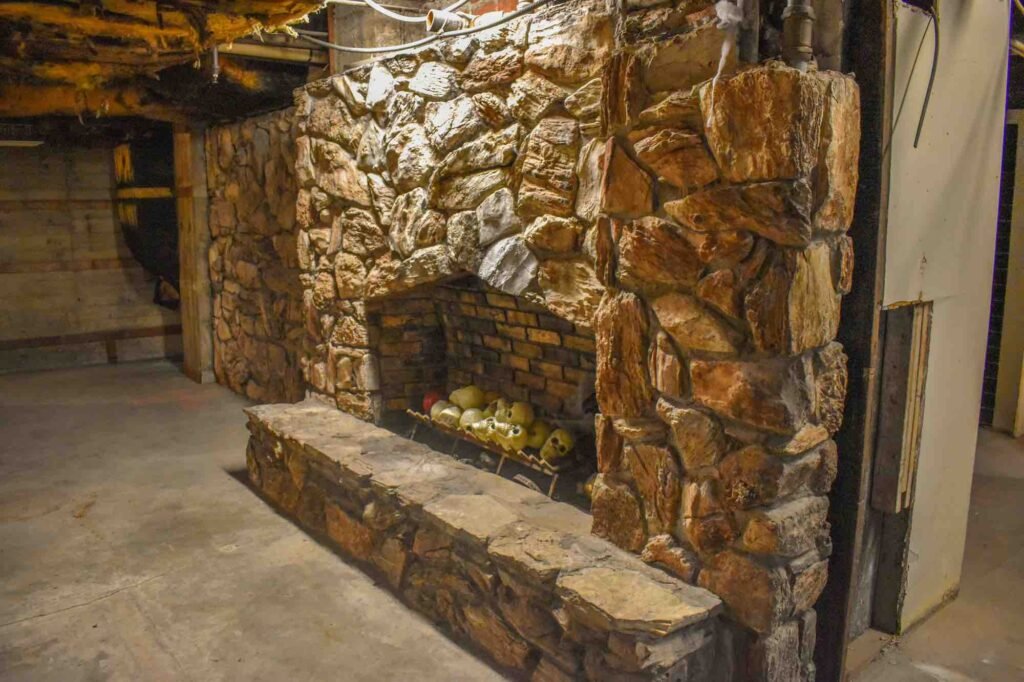
The DTLB space consists of three spaces: The Campbell Apartment Building, the 140-foot tall, 82-unit Spanish Baroque tower that was completed in 1928 at a cost of $700,000 and sits central on Linden between 1st and Broadway; the Lafayette Hotel, originally named Hotel de Cota, opened in 1929 after being designed by Arthur and Cecil Schilling, masters of the Art Deco style; and the Broadway Building, completed in 1948 at a cost of $1.5M as part of an expansion of the hotel and designed by architect Theodore H. Criley.
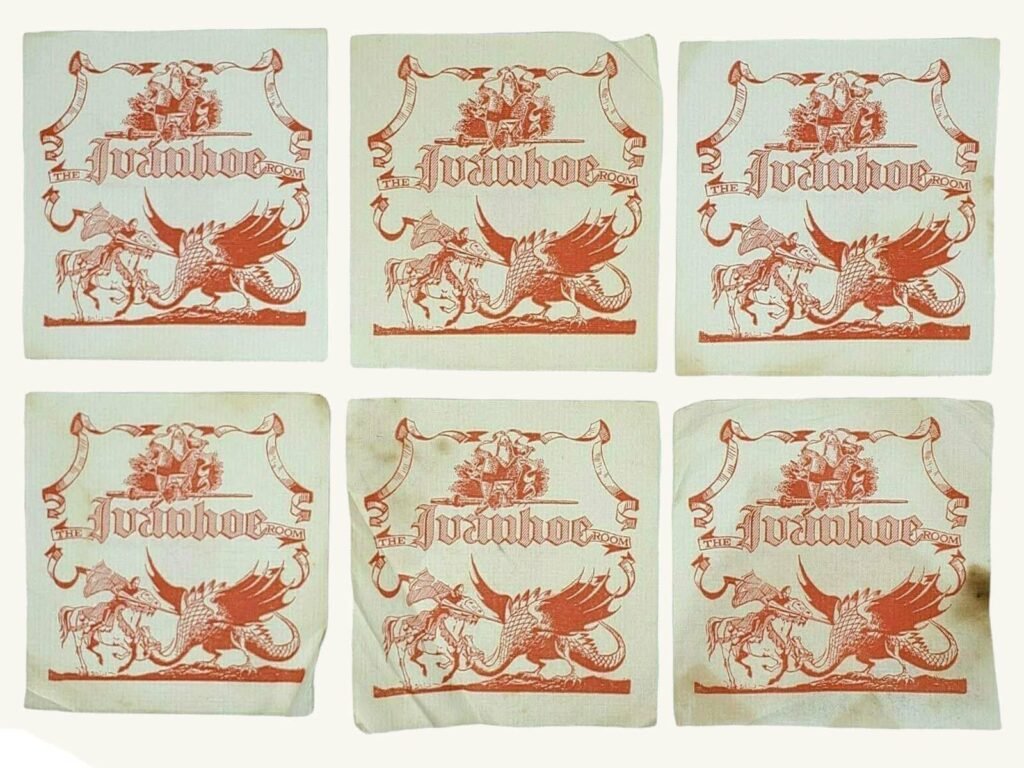
And while each of the buildings have been home to some stellar spaces—like the Outriggers tiki bar, which I plan on doing another separate post about—there are probably few as intriguing or outright kitschy as The Ivanhoe Room.
Opening in 1958, it is likely playing off the thematic success of the then-recent opening of Disneyland: While Disneyland had captured a small part of the American imagination thanks to its very well-publicized opening in 1955. And with the commonality of the individual car by that point—after the Master Plan of Metropolitan Los Angeles Freeways was adopted by the Regional Planning Commission in 1947, construction of our interlinking freeway system began in the early 1950s and by the late 1950s, thousands of cars were buzzing between cities—the largest portion of its guests were surely Southern Californian locals.
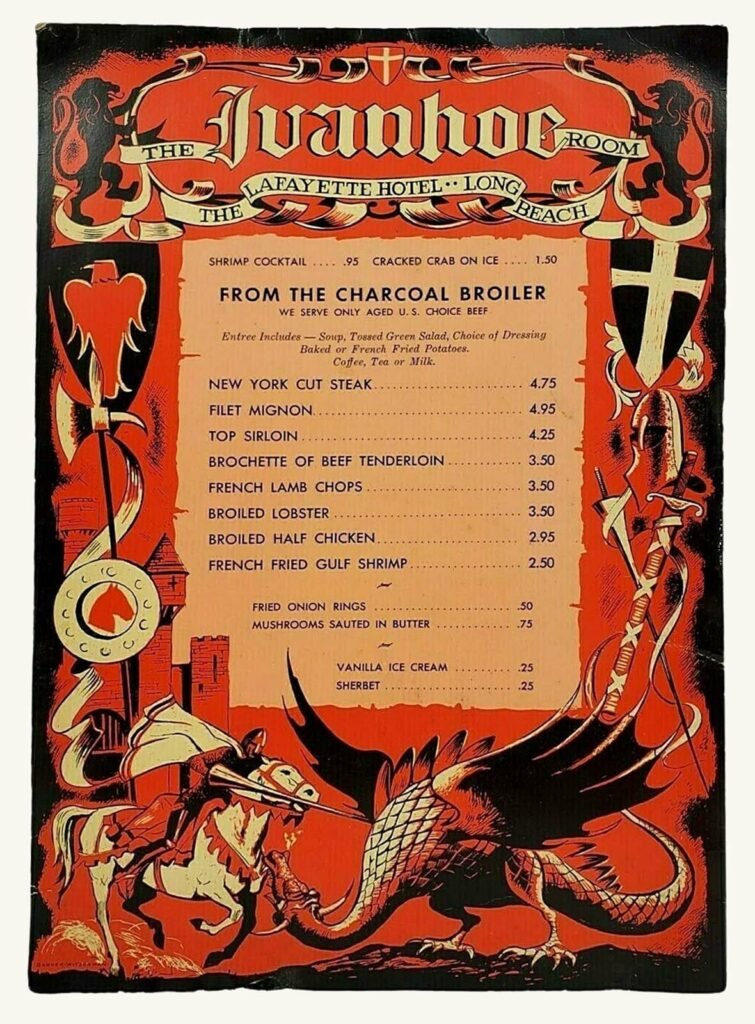
Of course, thematic dining was a big thing period in the 1950s, Disneyland or otherwise. And whether the Ivanhoe Room was inspired by that or not, they certainly owned to heavily theming their space.
Greeting guests? A soliloquy of sorts printed on placemats and sometimes said aloud by hosts serving guests:
“This eve a young squire shall be made a knight;
And therefore pledgeth lands and castles round
To furnish all that fits a man of might.
Meat, bread, and wine he gives to many a wench;
Capons and pheasants on his board abound:
Choice chambers, torches, and was candlelight.”


How the Ivanhoe Room looks today—and yes, the shackles still hang. Photos by Brian Addison.
One could walk through various caves, where actors were sometimes shackled up behind bars, acting as prisoners. Servers were dressed in full regalia. And the menu? Broiled steaks, seafood, and chicken—a reflection of the beginning of the American steakhouse.
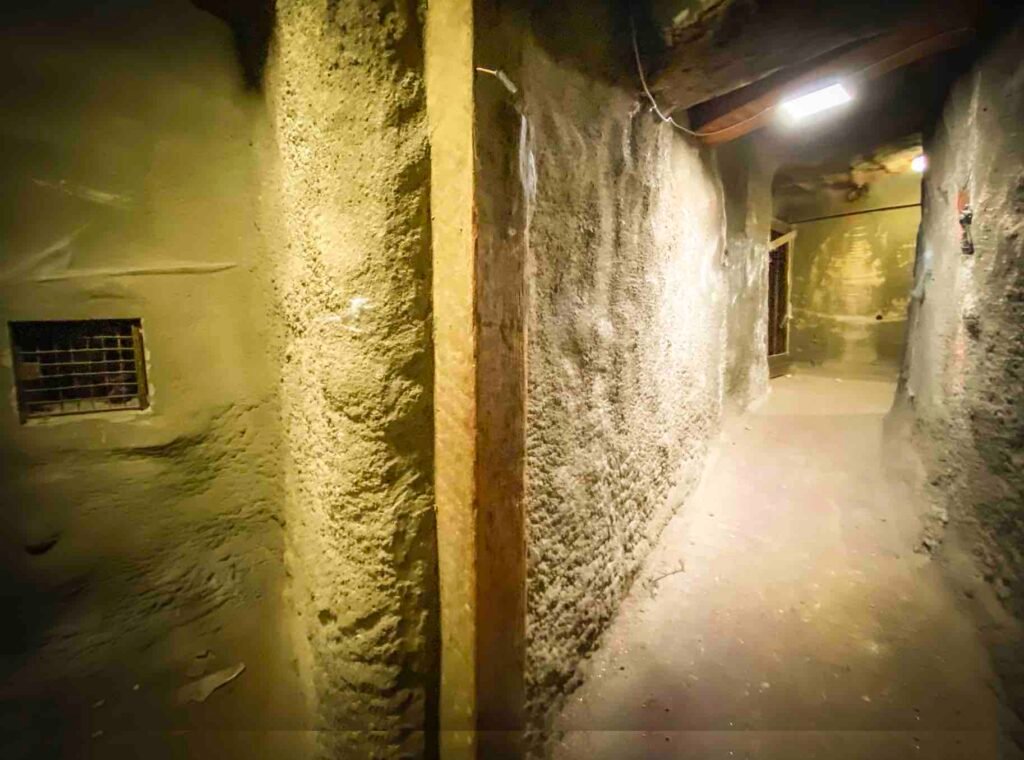
While a near impossibility to exist today—ADA compliancy alone makes the space a near impossibility to revive and that is for damn good reason—there is something particularly charming about this slice of Americana: Not only is much of it well-preserved, it also showcases a depth in experiential food that, in all frankness, didn’t exist elsewhere outside of the States. Europeans, up until recently, (somewhat rightfully) mocked America’s obsession with replicating times of the past while the rest of the world (also rightfully) largely refused to put resources into such extravagances, particularly for places where one eats.
Ivanhoe, whether one likes it or not, is as American as it gets—and in all honesty, how is one not curious about that broiled lobster?

